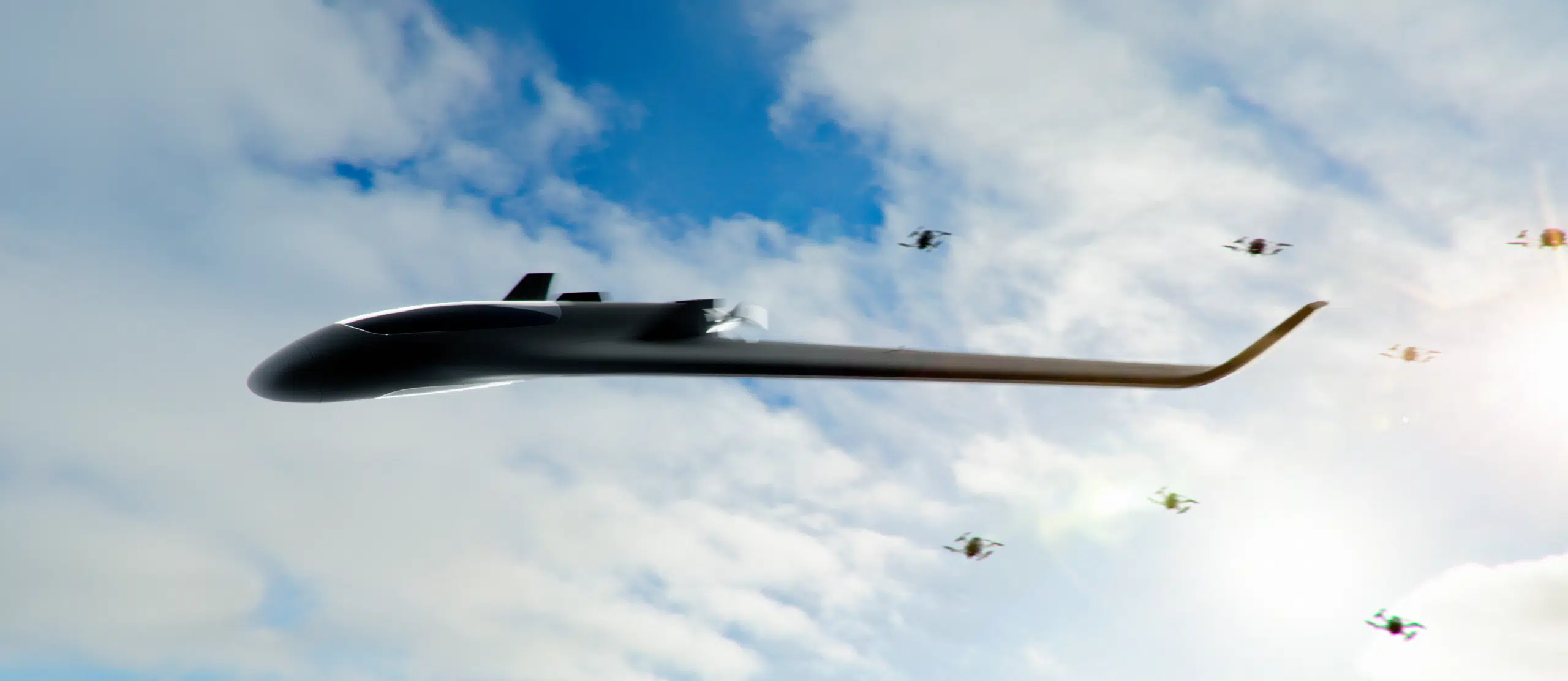The long strides taken in the development of AI drones can now help border security and surveillance operations all around the world by having access to unprecedented capabilities in various operations.
AI drones, equipped with advanced detection technologies like Electro-Optical (EO), Thermo and Infrared (IR), offer real-time data processing and analysis, enhancing the effectiveness of border security personnel and covering more ground.
The Rise of AI Drone Technology in Security
AI drone technology has seen significant advancements, making it an integral part of modern security strategies. They transform traditional surveillance methods by providing enhanced detection and tracking capabilities. These drones leverage cutting-edge technologies to capture high-resolution images and videos, analyze data in real-time, and identify potential threats. The incorporation of AI-powered detection technologies enables drones to operate effectively in diverse environments and conditions, ensuring comprehensive surveillance coverage.
Using the Watcher-1 Drone for Border Security
A prime example when it comes to ensuring successful surveillance operations is the Silent Sentinel Surveillance Drone, Watcher-1. Engineered as a fixed-wing platform with an electric thrust system, it offers stealthy, low-noise operation ideal for discreet surveillance. This drone’s multi-function capabilities include area mapping, threat detection and identification, making it versatile for various security applications.
The Watcher-1 is equipped with advanced autopilot and a robust digital communications network, enabling seamless day and night operations. With a long flight autonomy and kilometers of range, it can monitor and transmit real-time imagery of critical targets. Integrated with the ATA system, it ensures efficient data synchronization and enhanced operational coordination. The following border scenario explores the effectiveness of Watcher-1 during nighttime.
Scenario
Along a military installation’s fence that goes on for miles, the Watcher-1 drone gets deployed for a standard recon mission. The drone silently takes to the skies to patrol a particularly rugged and isolated area. Patrols are not able to cover such a vast area. Also, putting boots on the ground to intercept , which makes it prone to easy infiltration.
As the Watcher-1 soars above the treacherous terrain, its IR camera mode activates, cutting through the darkness and providing a crystal-clear thermal view of the landscape below. The drone’s powerful sensors could detect the slightest variations in temperature, making it nearly impossible for any movement to go unnoticed.
Operators closely monitor the live feed transmitted directly to their tablets and computer screens. The Watcher-1’s sophisticated AI algorithms continuously analyze the footage, highlighting any suspicious activity and potential threats. It doesn’t take long for the drone to detect a group of individuals moving cautiously through a dry riverbed, attempting to avoid the main patrols.
Detecting the Trespassers
The thermal images of the trespassers, glowing brightly against the cooler surroundings, were instantly relayed to the operators. The detailed IR footage allowed them to clearly see the number of individuals, their direction of movement, and that they’ve carried weapons and munitions. The operators quickly assess the situation and identify the most likely route the trespassers would take.
Watcher-1 provides real-time updates to the agents on the ground. Its precise GPS coordinates guided the agents through the challenging terrain, ensuring they could intercept the trespassers swiftly and safely.
The combination of the Watcher-1’s high-resolution IR imagery and seamless integration with the ground team’s equipment proved invaluable. The drone’s continuous surveillance allowed the operators to maintain a comprehensive overview of the area, while the real-time data feed ensured that every decision made was based on the most current information available.
A Successful Mission
Thanks to the Watcher-1, the mission is a resounding success. The operators managed to send a team that intercepted the trespassers, and the individuals are now in custody. This mission shows the immense potential of the Watcher-1 drone in enhancing security operations by being an indispensable asset in maintaining the integrity of bases and their borders.
We are also developing advanced anti-jamming technology for the Wasper-1 drone. This makes sure it operates with precision even in denied environments where jamming may be used. This will ensure the drone’s mission capabilities and maintain its communication resilience in hostile areas.
Enhancing Target Identification and Tracking with ATA
The integration of ATA (Automatic Target Acquisition) systems in AI drones like Watcher-1 significantly enhances target identification and tracking capabilities. ATA systems utilize advanced algorithms to analyze data from multiple sensors, providing accurate and reliable target information. This technology enables drones to distinguish between different objects, prioritize threats, and track moving targets with high precision. The result is improved situational awareness and more effective responses to potential security threats.
Increased Efficiency and Effectiveness
The deployment of AI drones in security operations leads to increased efficiency and operation success. These drones can cover large areas quickly, gather extensive data, and provide real-time insights for faster and more informed decision-making. The automation of routine surveillance tasks frees up human resources, allowing security personnel to focus on critical analysis and response activities. Overall, AI drones enhance the way security agencies operate, making them more agile.
The Future of AI Drone Technology in Security Operations
AI drone technology keeps developing at a very fast rate, and its future in security operations is a promising one. Ongoing advancements in AI, sensor technology, and data processing will continue to enhance the capabilities of surveillance drones. Future developments may include improved autonomy, longer flight durations, and enhanced data analytics, further boosting the effectiveness of security operations. As these technologies evolve, AI drones will play an increasingly vital role in ensuring national security and public safety.
In conclusion, AI drones represent a significant leap forward in security technology. Their ability to provide real-time, comprehensive surveillance, coupled with advanced data processing and analysis, makes them indispensable in modern security operations. From border security to disaster response, AI drones are transforming the way we approach safety and security, offering new levels of efficiency, precision, and effectiveness.
Discover how we’re setting new standards in defense technology by providing advanced solutions that anticipate and adapt to the evolving dynamics of security operations.




